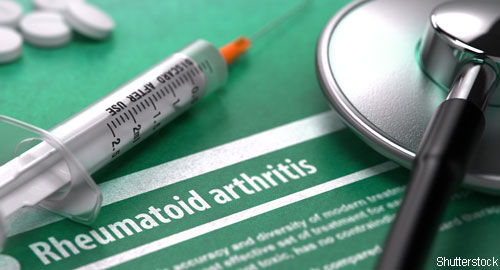 T cells cause autoimmune damage when they traffic to peripheral tissues and maneuver within them. Although T cells may first appear to walk randomly to infiltrate a tissue, pathogenic T cells must form organized membrane extensions for directed motion. This process appears to be critical for rheumatoid arthritis (RA) pathogenesis, because joint-invading T cells must be able to rapidly enter the synovial membrane and penetrate joint tissue. The cells must then travel through extravascular space and transform into proinflammatory RA effector cells.
T cells cause autoimmune damage when they traffic to peripheral tissues and maneuver within them. Although T cells may first appear to walk randomly to infiltrate a tissue, pathogenic T cells must form organized membrane extensions for directed motion. This process appears to be critical for rheumatoid arthritis (RA) pathogenesis, because joint-invading T cells must be able to rapidly enter the synovial membrane and penetrate joint tissue. The cells must then travel through extravascular space and transform into proinflammatory RA effector cells.
Scientists can differentiate these effector T cells from naïve cells by their metabolic pathways. Proliferating naive cells are glycolysis dependent, but this dependence changes as the cells acquire effector functions. In particular, RA effector T cells are reprogrammed to shunt glucose away from glycolysis and toward the pentose-phosphate pathway. New research from Stanford University School of Medicine in California and the Mayo Clinic College of Medicine in Rochester, Minn., suggests that metabolic control of T cell locomotion may provide an intervention, preventing T cells from invading specific tissue sites. Yi Shen of Stanford and colleagues published their research in the September issue of Nature Immunology.1
Researchers began by examining the migratory capacity of RA and healthy, human-activated naive CD4+ T cells in a chemokine-free system. They compared the two groups of cells to identify differences in the expression of a core group of genes associated with cellular locomotion.
The investigators identified the aberrant expression of the podosome scaffolding protein TKS5 in patient-derived T cells. When they examined whether those cells would be more likely to invade chimeric mouse tissue than control cells, they found these RA T cells formed membrane ruffles that allowed them to spread and move into non-lymphoid tissues. The RA T cells also had aberrant lipid biosynthesis. Specifically, the researchers found markedly higher concentrations of 20 lipogenesis genes in the patients relative to controls. When they activated RA T cells in vitro, they found higher levels of ACACA, FASN and SCD transcripts—all of which are required for de novo synthesis of fatty acids—in these patient cells compared with activated control cells. Researchers note that not all genes related to intracellular lipid homeostasis were affected when the RA T cells shunted toward lipid anabolism. The broad lipogenic gene program seen in activated RA T cells was selective and focused on the formation of fatty acids and cytoplasmic lipid droplet, but not cholesterol.
“RA T cells are distinguished from their healthy counterparts by dampened glycolytic breakdown, reduced pyruvate production and accelerated [pentose-phosphate pathway] shunting,” explain the authors in their discussion. “Instead of adopting a primarily catabolic program, they utilize anabolic biosynthesis.”
The researchers then searched for evidence of excess NADPH, which indicated reductive elements were driving these anabolic reactions. They also found ATPlopyruvatelo conditions triggered fatty acid biosynthesis, as well as the formation of cytoplasmic lipid droplets. The investigators reversed this metabolic condition by restoring pyruvate production or by inhibiting fatty acid synthesis. These interventions were also able to correct the tissue invasiveness and proarthritogenic behavior of RA T cells in vivo.
Lara C. Pullen, PhD, is a medical writer based in the Chicago area.
Reference
- Shen Y, Wen Z, Li Y, et al. Metabolic control of the scaffold protein TKS5 in tissue-invasive, proinflammatory T cells. Nat Immunol. 2017 Sep;18(9):1025-1034. doi: 10.1038/ni.3808. Epub 2017 Jul 24.
